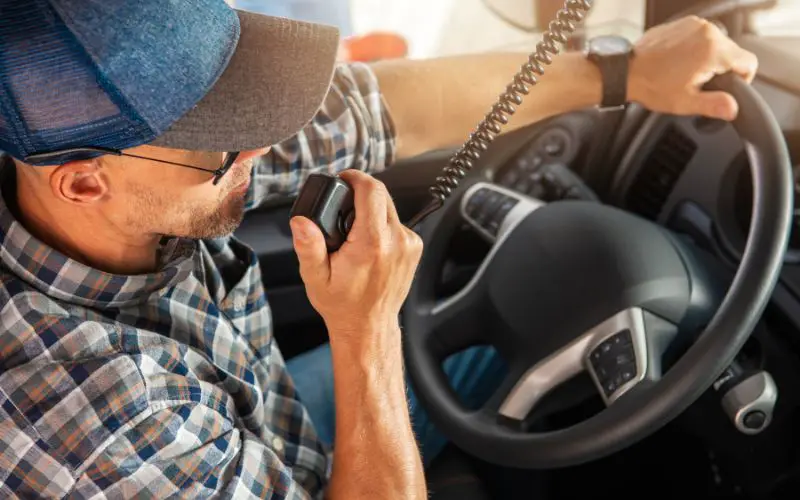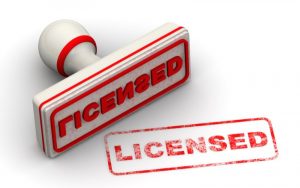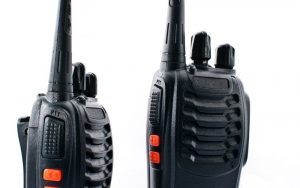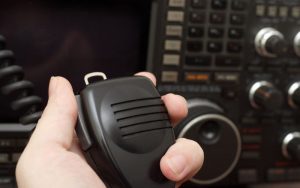Ham radios and CB radios have been around for decades, and for a good reason they’re both great ways to communicate with others.
But which one is better?
For function, power, accessories and modes of operation, ham radio is the better option if you are thinking about getting on the air. It’s now more accessible and easier to qualify as a radio amateur. With CB you can just buy a rig and get on the air straightaway with no licence needed making it an ideal option for anyone exploring radio.
The basic differences between ham radio and CB radio
The ham radio service is designed for individuals who wish to talk long distances, or who like to talk in on air nets of other users, communicate during emergencies, and experiment with antennas and other home made equipment.
Ham radio differs from CB in that to be a ham radio operator you have to pass an examination that shows that you have a basic understanding of the principles involved.
As you gain more experience and knowledge you can take further examinations that will enable you to become a more advanced and privileged operator.
The process of examinations varies depending upon where you live – if you are in the USA then you should consult the ARRL website and for the UK the RSGB provides all of the information that you need.
Both ham radio and CB radio are used globally but, whereas CB tends to be used for local communications ( within a few miles ) ham radios can communicate over large distances, frequently between continents.
At a glance
- Ham radio provides a wide scope for activity, from high levels of power to multiple bands and frequencies and the ability to design, make and use your own equipment.
- Radio amateurs frequently make long distance contacts, often across continents, using their skills and knowledge alongside their equipment, to develop the best contacts possible.
- Ham radio is a licenced activity, which means that you have to qualify to obtain authority to use the service by passing an examination. As you progress through the exam system you gain additional benefits, such as more power, more frequencies and the ability to operate overseas.
On the other hand when thinking about CB radio:
- Like ham radio, CB is used across the globe.
- In many countries CB is easy to access and does not require a licence to use.
- CB is often low powered ( around 4 to 10 watts) and is normally used for short range communications. Although in some conditions CB radios can transmit across continents.
- CB radio is often used on a mobile basis, such as in cars or trucks and is often used as a way of getting traffic reports.
- CB is making a comeback as people seek more ‘retro’ ways of keeping in touch with friends and family across local neighbourhoods.
- Just like ham radio CB is also used during times of emergencies where rapid and local communications are needed.
Should you get a ham radio or CB?
This will really depend upon your interests and whether you feel able to undertake the training and exam to become an amateur radio ( ham ) operator.
If you are new to radio and wish to explore to see whether you might enjoy the interaction and the experience then a CB would be a cheap and easy way to do this.
You won’t need to get a license for a CB and, for a relatively small investment for a transceiver and antenna, you can be quickly on the air.
If you go for a mobile type unit then you can operate from home and also use the CB in your car.
This can be good fun as it allows you to travel to different areas to see how far you can broadcast and make contacts.
Prior to becoming a radio ham, as a teenager my friend and I used to drive to a nearby hill ( where the TV transmitter was sited so it was quite high ) and we would park up and use the CB, which was only 4 watts of power.
We would frequently make contacts as far as 70 to 80 miles away whereas at home we would be lucky to get 10 miles.
So, for an introduction to radio a CB is a great choice, you can experiment with antennas and different locations and it’s a good way to get an understanding of propagation and other factors that affect radio.
Ham Radio
Many ham radio operators made the progression from CB to ham radio, and, in fact many ham radio operators still use the CB as well as their ham radio gear.
This was the route that I took, progressing into ham radio from CB and continuing my love of radio communications.
Ham radio offers significantly more than CB and will increase the range and type of activities that you can perform, one of the main ones being international contacts.
Once you’ve qualified as an amateur radio operator you’ll have much more services at your fingertips than you’d ever had as a CB operator – plus you’ll still have the CB too.
To recap – use of ham radio and CB radio
People use ham radio:
- Ham radio is more formal and requires a licence.
- It is often used to chat across long distances but can be useful for local communications too.
- It is available in many forms from home bases, mobile units and portable handheld radios.
- Radio amateurs have access to a wide range of frequencies.
- Ham radio is often used to assist emergency services in times of disaster.
- It’s a popular, global activity enjoyed by millions of people.
People use CB radio for:
- CB is accessible and doesn’t need a licence- you can get one and use it straightaway.
- There are limitations but it’s a great way to get on the air.
- CB radio is used by hikers as a safety backup for communications. Often mobile phone coverage can be patchy in remote rural areas such as mountains and a portable CB can be a handy device to have.
- CB radio is often used on the roads for traffic and weather information.
- CB is often common among preppers and such like who have a radio set on standby for communications when more modern systems fail.
Final Words
Both ham radio and CB exist for people to communicate with each other and there are similarities between the two.
Both systems can be used for handheld and mobile communications as well as from home or other fixed locations.
The big differences are that ham radio operators have access to far greater levels of power and a wider range of frequencies than CB operators, enabling them to make reliable contacts over long distances.
CB, however, is accessible to anyone that wishes to use it and does not need a licence and this makes it an ideal choice for anyone looking to explore radio and it makes a good platform for future progression into amateur radio should you wish to head down that route.
As to which is the best?
This depends on what you are looking for.
As someone who has and operates both – My view is that ham radio has more to offer than CB as it simply provides a far greater ability and options for making contact in different conditions.
CB though is fun and is an easy way to make local contacts and friends and to share ideas and information.
Read Next
- Can ham radio survive EMP?
- Why do you need a ham radio license?
- What is 2m ham radio?
- What’s better ham radio or CB radio?
- Is morse code still useful?
- What does QRP mean in ham radio?











